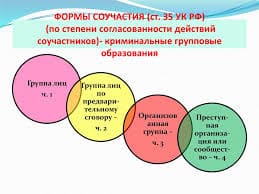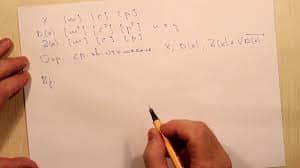There are different points of view on syllable formation which are briefly the following.
The most ancient theory states that there are as many sylla
bles in a word as there are vowels. This theory is primitive and insuffi
cient since it does not take into consideration consonants which also
can form syllables in some languages, neither does it explain the
boundary of syllables.
The expiratory theory states that there are as many syllables
in a word as there are expiration pulses. The borderline between the
syllables is ^according to this theory, the moment of the weakest ex
piration. This theory is inconsistent because it is quite possible to
pronounce several syllables in one articulatory effort' or expiration, e.g. seeing /Isi: 15/.
3. The sonority theory states'that there are as many syllables in a word as there are peaks of prominence or sonority.
Speech sounds pronounced with uniform force, length and pitch, differ in inherent prominence or sonority. For example, when the Russian vowels /а, о, э, у, и/ are pronounced on one and the same level, their acoustic intensity, or sonority is different: the strongest is /a/, then go /о, э, у, и/,
The sonority theory helps to establish the number of syllables in a word, but fails to explain the mechanism of syllable division because it does not state to which syllable the weak sound at the boundary of two syllables belongs.
4. The arc of^loudness" or "arc of articulatory tension" theory is based on L. V. Shcherba's statement that the centre of a syllable is we syllable forming phoneme. Sounds which precede or follow it constitute a chain, or an arc, which is weak in the beginning and in the end and strong in the middle.
If a syllable consists of a vowel, its strength increases in the beginning, reaches the maximum of loudness and then, gradually decreases.
Graphically it can be represented by an arc of loudness or an arc of articulatory tension.
Consonants within a sillable are
,,, characterized by different distribution
of muscular tension. Shcherba distinguishes the following types jot consonants:
finally strong (initially weak), they occur at the beginning of the syllable;
.finally weak (initially strong), they occur at the end of a closed ■syllable;
double peaked (combination of two similar sounds): in their articulation the beginning and the end are energetic and the middle is weak.Acoustically they produce an impression of two consonants: flpen «naif/, /igud 'dei/.
For example, in the words cab, за the consonants /k/ and /з/, that begin the syllables, are "finally strong", that is their articulatory strength increases to the end of /k/ and/з/ (they are also called initially weak). These consonants begin "the arc of loudness"
In the words eat, воз the final consonants /b/ and /в/, that end the syllable, are finally weak", that is their articulatory strength decreases to the end of /b/ and /a/. These consonants terminate the arc of loudness" or the arc of muscular tension.
In terms of the "arc of loudness" theory there are as many syllables in a word as there are "arcs of loudness" and the point of syllable division corresponds to the moment, when the arc of loudness begins or ends, that is: initially weak consonants begin a syllable, finally weak end it. (Finally strong consonants begin a syllable, initially strong end it.) For example, the word mistake consists of two arcs of loudness in which /m/ and /t/ are finally strong consonants and /s/ and
S/ аГеча 1уА- s/ constitutes the end of «the arc of loudness", /t/ constitutes the beginning.
A syllable can be defined as a phonetic unit, which is pronounced by one articulatory effort accompanied by one muscular contraction, which results acoustically and auditorily in one uninterrupted arc of ■loudness.
The experiment carried out by N. Zhinkin showed that it is the pharynx, which is responsible for the variations in the loudness of the syllable. Perceptually the peak, or the crest of the syllable, is louder and higher in pitch than the slopes.
On the acoustic level it is characterized by a higher intensity than the slopes, and in many cases by a higher fundamental frequency.
None of the theories mentioned above are reliable in the definition of the syllabic boundary. To define the syllabic boundary it is necessary to analyse the syllable on two levels: articulatory-auditory {phonetic-phonological), to take into consideration the structural pattern of the syllable.
Different languages are characterized by different types of their syllabic structure.
In the Russian language syllables of СГ-СГ type have their boundary after the vowel: мо-ло-ко, о-ко-ло.
There are similar cases in'English: щюг£ег/%з:-кэ/, army /'a:-mi/, party /lpa:-ti/.
In the Russian words with ГССГ structural type, the place of the syllabic boundary depends on the character of CG cluster. If it occurs initially, it may beging syllable:мрак — о-мрачать, but Ал-тай, since лт does not occur^ initially. *
A similar distributional dependence of the syllabic boundary on the nature of the CC cluster exists in English. E.g.
great—agree /э-igri:/, break—abrupt /a-'brApt/ However there are exceptions» e.g.
speak /spi'.k/—despite /dis-ipait/
sky /skai/—escape /is-ikeip/
twice /twais/—saltwort /iso:lt-wa:t/
There is a tendency in Russian to begin non-initial syllables with the sound of minimal sonority: до-жди, ко-тлы, but тан-ки, кол-хоз.
Electroacoustic analysis makes it possible to formulate the following rules of syllable division in English:
1, In affixal words the syllabic boundary coincides with the morphological boundary: dis-place, be-come, un-able, count4ess.
VOPROS
 2015-09-06
2015-09-06 6520
6520







